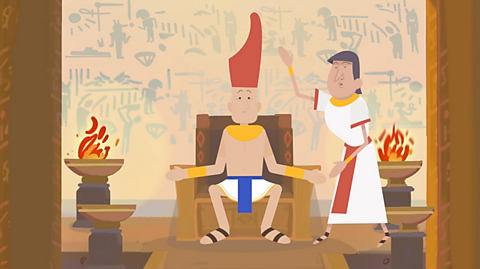What are hieroglyphs?
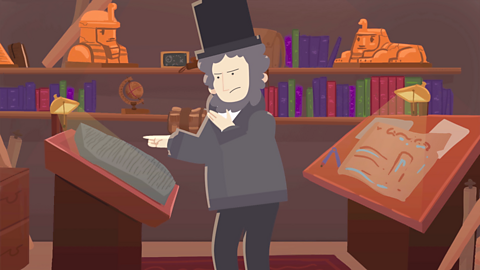
The ancient Egyptians invented one of the earliest known writing systems used from around 3000 BC.
The symbols they used were called hieroglyphs, which comes from a Greek word meaning ‘sacred carving’.
The ancient Egyptians believed that hieroglyphs had been invented by the gods.
The Rosetta stone was discovered in 1799 AD. It is a three-foot high stone containing hieroglyphs, everyday ancient Egyptian language and a Greek translation. Since Greek was understood, the hieroglyphs could then be translated into modern European languages, so the Rosetta stone was the key to the hieroglyphic code.

Who used hieroglyphs?

- In Ancient Egypt, the people who wrote hieroglyphs were called‚ÄØscribes.
- A scribe had to go to a special school because it was very complicated.
- Hieroglyphs included around‚ÄØ700‚ÄØdifferent signs of objects and animals.
How were they written?
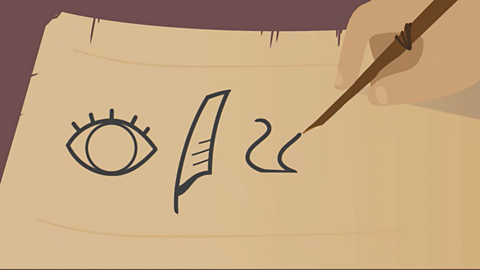
Some signs were pictorial or symbolic and stood for whole words. Some signs were phonetic, which means they stood for sounds. Hieroglyphs inspired the first alphabets, including the Latin alphabet which we use today.
Hieroglyphs could be written vertically, horizontally, left to right, or right to left! The phonetic hieroglyph alphabet is the closest version to our modern English alphabet. It is not exactly the same because the ancient Egyptians did not have symbols for vowels (‘a’, ‘e’, ‘i’, ‘o’ or ‘u’), but the alphabet below includes the closest sounds.

What can hieroglyphs tell us about ancient Egypt?

The ancient Egyptians wrote the names of their gods and royal people in an oval shape called a‚ÄØcartouche. The oval shape represents a rope with special powers to ward off evil spirits and keep the name inside it safe.
Hieroglyphics are found on seals, plaques, tombs, pottery and walls on ancient Egyptian remains which tell us about beliefs, gods, clothing, everyday life and culture.
The ancient Egyptians also used papyrus and writing boards which recorded laws, taxation and government business.
These written records of ancient Egypt give us information about the beginning of history. This is in contrast to societies that had no written record, such as the people who built Stonehenge between 3000-2000 BC, the exact same time as ancient Egypt.

Examples of hieroglyphs
- Image source, The Metropolitan Museum Of Art, New York
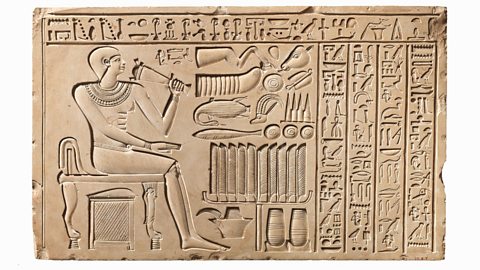
Image caption, Stone carving of Gatekeeper Maati, ca. 2051–2030BC
In this image an official of Pharaoh Mentuhotep II called Maati sits in front of an offering table. It looks like a carving related to a funeral because the table is a stand with tall leaves. Food offerings float above the table and below it is a bowl for Maati to wash himself. The hieroglyph text on the right are traditional passages carved to remember the dead.
- Image source, The Metropolitan Museum Of Art, New York
Image caption, Hands offering Aten writing tablets, ca. 1352–1336BC
This piece was found in the Sanctuary of the Great Aten Temple. Aten's name is written inside the two oval shapes that you can see on the front.
- Image source, The Metropolitan Museum Of Art, New York
Image caption, Book of the Dead for the Singer of Amun, Nany, ca. 1050BC
This is a section from a piece of papyrus (ancient Egyptian paper) that was over 17 feet long. It shows a singer named Nany on her journey into the afterlife. The hieroglyphs are phrases from the 'Book of the Dead'. Nany is at the final stage in her journey into the afterlife. She is at the Hall of Judgement, standing in front of Osiris, the God of the Underworld.
- Image source, The Metropolitan Museum Of Art, New York
Image caption, Stone carving of Userhat,1327–1295BC
On this piece of stone, a priest called Userhat talks about all of his good qualities and about his trust in a god called Amun. He is shown here kneeling down with his wife who is called Nefertari.
- Image source, The Metropolitan Museum Of Art, New York
Image caption, Stone carving of the Overseer of the Fortress Intef, ca. 2000–1988BC
On the top line of this piece is the name of King Nebhepetre Mentuhotep II. The owner of this piece is a man named Intef. In the hieroglyphs, he says he is the king's servant and in charge of a fortress.
1 of 5
Activities
Use the hieroglyph alphabet below to help you complete the activities.

Activity 1: Spell with hieroglyphs
Activity 2: Crack the hieroglyph code
Activity 3: Write your name in hieroglyphs
Download the ancient Egyptian alphabet and try to copy them. Can you write your name in hieroglyphs?

Activity 4: Hieroglyph quiz
Activity 5: History Explorer game
Play this game to test your knowledge and learn even more facts about Ancient Egypt.
History Explorer: Secrets through time
History Explorer: Secrets through time: KS2 History
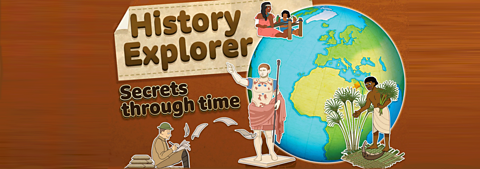
Bitesize Primary games. gameBitesize Primary games
Play fun and educational primary games in science, maths, English, history, geography, art, computing and modern languages.

More on Ancient Egypt
Find out more by working through a topic
- count9 of 18
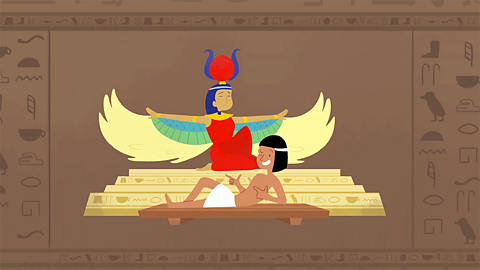
- count10 of 18
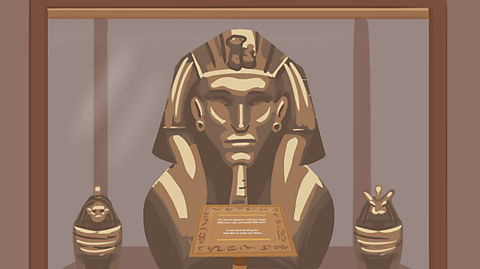
- count11 of 18
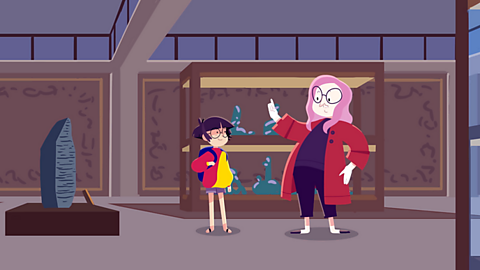
- count12 of 18
